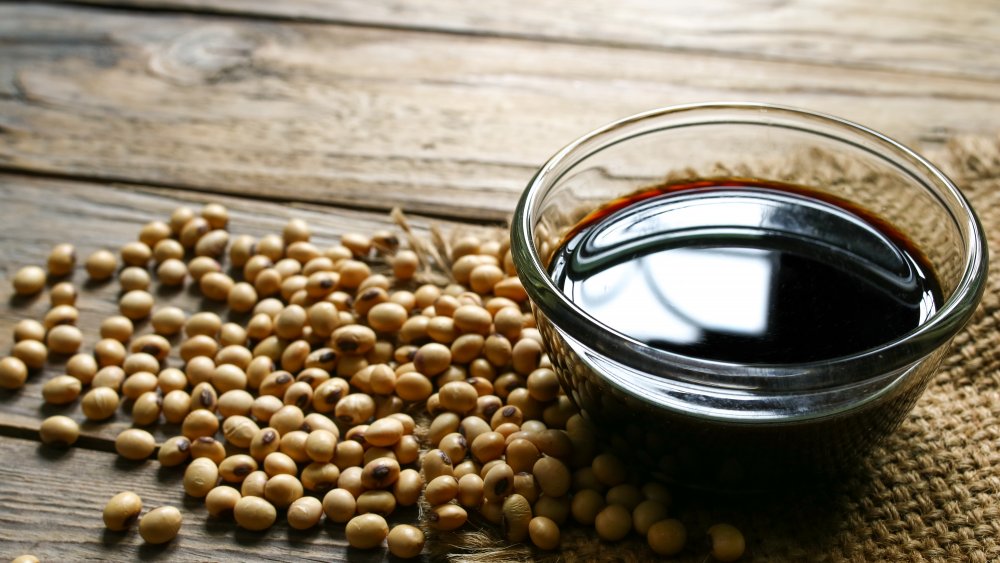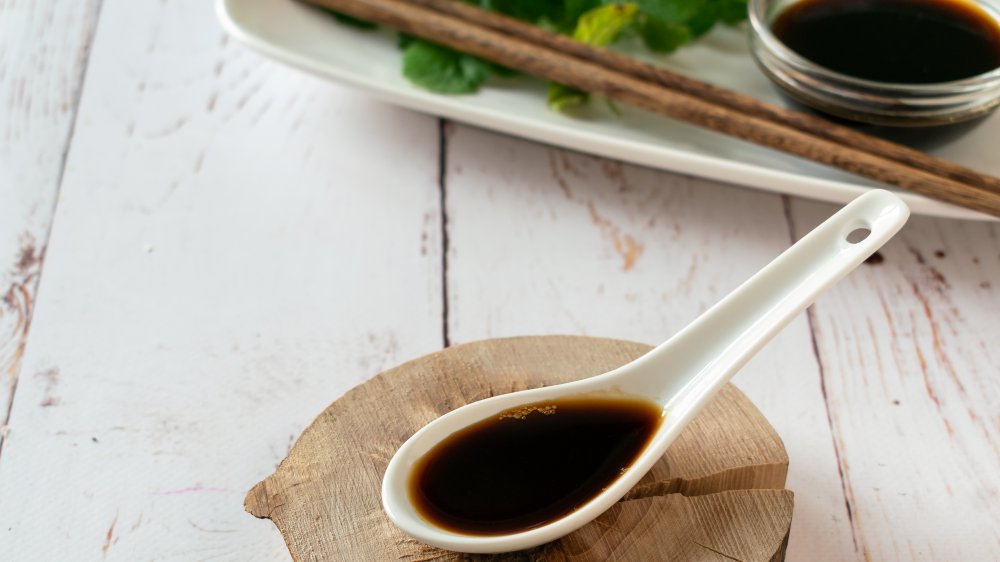Here's What You Can Substitute For Soy Sauce
Soy sauce has been a beloved ingredient in Asian cooking for hundreds of years, but today it has catapulted to household-name status as "the best known and most widely used traditional soyfood in the Western world" (via Soyinfo Center). Salty, savory, and full-flavored, soy sauce brings umami to the table in liquid form, making it a standby for everything from sushi to stir fries (via PureWow).
However, diners may seek substitutes for this Asian staple condiment for a variety of reasons. Notoriously (though lower-sodium varieties are available), its sodium content is formidable, with just one tablespoon packing 38 percent of the recommended daily intake, while some may experience sensitivities to soy sauce, including those with wheat or gluten intolerance (via Healthline).
To further complicate matters, a slew of soy sauces populate the landscape: Japanese types in dark or light are most common, but you can also find Chinese varieties in light, dark, or double dark; the sweeter Indonesian kecap manis; and mass-produced "artificial" soy sauces that forgo the traditional fermentation process in favor of fast-paced, chemical-enhanced production (via Serious Eats).
Whichever sauce you're trying to substitute — and for whatever reasons — chances are, there's an alternative that will work.
Premade and DIY soy sauce substitutes
Tamari is a popular gluten-free substitute for soy sauce. Like the latter, it's made from fermented soybeans, but it provides "darker color and richer flavor" without the salt overload, for a "more balanced" taste (via The Kitchn). However, its composition makes it a no-go for those with soy allergies.
Worcestershire sauce is another possible replacement, adding umami with less salt, and zero gluten or soy — but vegans, vegetarians, and those with seafood allergies will need to seek out a variety that holds the anchovies, a common Worcestershire component (via PureWow).
According to Healthline, aminos may prove healthier alternatives: Coconut aminos are a vegan option sans soy or gluten, while liquid aminos do contain soy but provide full flavor with less sodium; as a bonus, both offer health-boosting amino acids.
Finally, Healthline notes, premade solutions like fish sauce, Maggi seasoning sauce, or Japanese shoyu sauce can be used in a pinch, though they may be more difficult to find Stateside outside of specialty or international markets.
For home cooks looking to craft their own soy sauce alternatives, successful recipes tend to combine a mixture of flavors to recreate the complexity of the original. Taste of Home blends bouillon, water, cider vinegar, sesame oil, dark molasses, and black pepper. PureWow suggests soaking dried mushrooms and using the liquid for a very low-sodium switch that still "packs an umami punch." Times Colonist starts with beef stock and adds ground spices like ginger and garlic powder. Experiment to find your favorite flavor combo!

